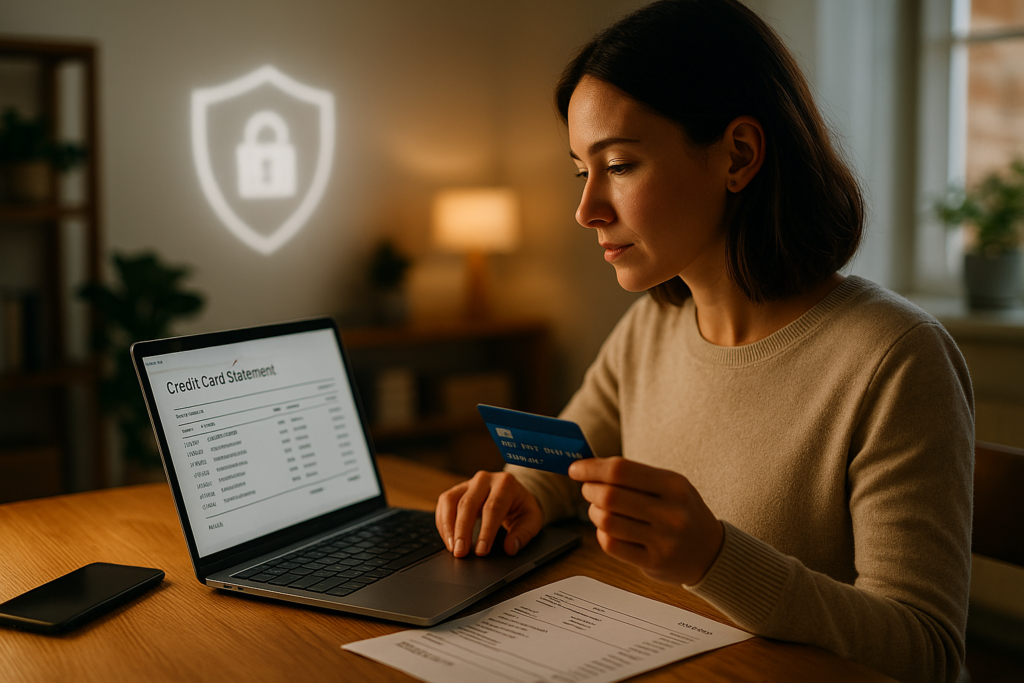Credit cards have become an integral part of our financial lives. They offer convenience, rewards, and a way to build credit scores. But as their usage grows, so do the risks associated with credit card fraud and scams. In 2025, understanding the latest threats and implementing robust security measures is more crucial than ever. This comprehensive guide aims to educate you on common credit card threats and provides practical tips to protect your finances effectively.
Common Credit Card Threats in 2025
The landscape of credit card fraud evolves continuously. Cybercriminals employ sophisticated tactics to steal data, access accounts, and make unauthorized transactions. Here are some of the most prevalent threats:
1. Phishing Attacks
Phishing remains a top method for cybercriminals. Fake emails or messages mimic legitimate banks or financial institutions, tricking users into revealing their credit card details, PINs, or OTPs. In 2025, these scams are more convincing, often using personalized data and high-quality graphics.
2. Skimming Devices
Skimming involves installing small hardware devices on ATMs or card terminals that capture the data from your credit card’s magnetic strip. Criminals can then clone your card or make unauthorized purchases.
3. Data Breaches
Large-scale data breaches at retailers, payment processors, or financial institutions can expose millions of credit card details. Cybercriminals often sell this data on dark web marketplaces, which can then be used for fraudulent activities.
4. Fake Websites and Online Scams
Phony e-commerce sites or fraudulent payment portals can steal your credit card information if you’re not cautious during online transactions. Fake apps and counterfeit websites have become more sophisticated, making it harder to distinguish genuine ones from scams.
5. Card Not Present (CNP) Fraud
Online transactions, where physical cards are not required, are vulnerable to CNP fraud. Cybercriminals use stolen card details to make purchases online without the need for physical access to the card.
How to Protect Your Credit Card in 2025
The good news is that you can significantly reduce the risk of fraud by adopting smart, proactive measures. Here are some essential tips:
Implement Strong Passwords and PINs
- Use complex and unique passwords for your online banking and credit card accounts.
- Avoid sharing PINs or passwords with anyone.
- Change your PIN regularly to reduce the risk of unauthorized access.
Turn On Transaction Alerts
Most banks offer SMS or email alerts for every transaction. Enable these notifications to stay informed about any activity on your credit card. Immediate alerts help you identify unauthorized transactions quickly.
Use Secure, Trusted Websites
Make online purchases only on HTTPS secured websites. Check for the padlock icon in the address bar and verify the URL before entering your card details. Avoid sharing your credit information on unfamiliar or suspicious sites.
Opt for Virtual Credit Cards
Many banks now provide virtual credit card numbers for online shopping. These temporary card details reduce the risk of exposure if a website gets compromised. Use virtual cards for one-time transactions or small purchases.
Employ Multi-Factor Authentication (MFA)
Activate MFA wherever possible. This adds an extra layer of security by requiring a second verification, typically via OTP sent to your registered mobile number.
Regular Monitoring of Statements
Review your credit card statements frequently. Dispute any unfamiliar charges immediately. Early detection of fraud can limit your losses and help the bank take swift action.
Update Your Banking and Security Apps
Keep your banking apps and device software up to date. Updates often include security patches that protect against new threats.
Be Cautious with Public Wi-Fi
Avoid accessing sensitive financial information over public Wi-Fi networks. Use a reliable Virtual Private Network (VPN) if you need to transact from a public connection.
Choosing Credit Cards with Built-in Security Features
Some credit cards offer enhanced protection features such as fraud monitoring, zero liability policies, and EMV chip technology. When comparing credit cards, consider options like the HSBC Platinum Credit Card or IDFC FIRST Millennia Credit Card that can add an extra layer of security to your transactions.
FAQs about Credit Card Security in 2025
1. How can I identify a phishing email?
Look for unusual sender addresses, poor grammar, unexpected requests for personal information, and suspicious links. Always verify the sender’s details before clicking on any link or sharing sensitive information.
2. What should I do if my credit card details are stolen?
Immediately report the incident to your bank, block or freeze your card, and monitor your account for unauthorized transactions. Most banks have zero liability policies that protect you from fraudulent charges when you report promptly.
3. Are contactless cards safe to use?
Contactless cards are generally safe due to encrypted communication and limited transaction limits. However, always keep your card close and monitor your statements regularly.
4. Can I rely solely on EMV chip technology for security?
EMV chips significantly reduce cloning risks. Still, combine chip technology with other security practices, such as PINs and transaction alerts, for robust protection.
5. How often should I change my PIN?
It is advisable to change your PIN periodically, at least every 3-6 months, especially if you suspect someone might have gained access to it.
Protecting your credit card in 2025 involves awareness, vigilance, and adopting the right security tools. Start with understanding the threats and implementing these practical tips. Want to explore credit cards that come with advanced security features? Visit our home page or check the latest blog posts for updates on the best credit card offers and security innovations. Stay safe and financially secure!

